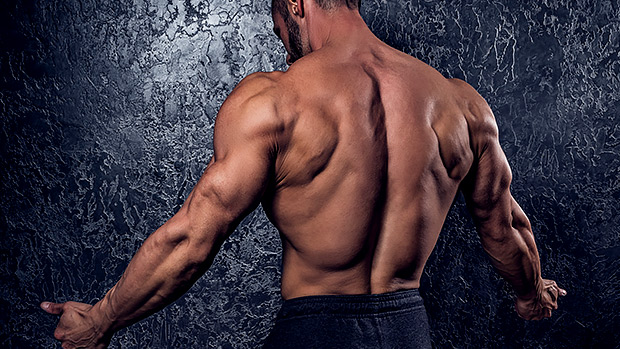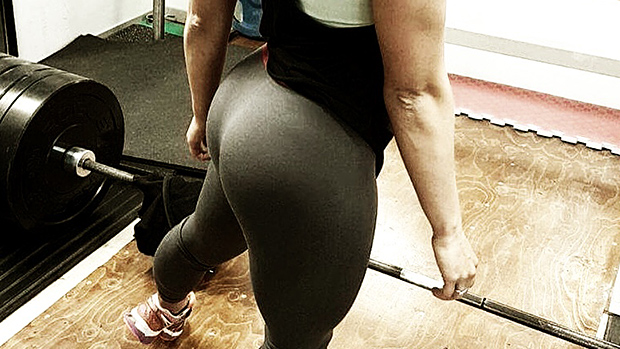1. Train Thoracic Extension
Back training isn't as simple as choosing one vertical and one horizontal pulling exercise. The back has many functions. Most people neglect thoracic extension, responsible for spine health and thick mid/upper traps.
Most thoracic extension exercises are mobility exercises, like cat-cows or foam roller extensions. Those are cute, but you'll need to load up this pattern for serious gains at some point.
Here's what a more advanced lifter can do:
Chest-to-Bar Pull-Up
- Start with your spine in a neutral position at the bottom.
- Pull yourself up explosively without swinging.
- Arch your back and keep contracting until your chest is at bar level.
- Bonus points if you can get your nipples to the bar.
Doing pull-ups like adds range of motion. This should be standard. You're short-changing your upper back when you leave those last inches untrained. It also gives you an objective benchmark: when you can no longer get this high, you've hit failure.
Furthermore, don't think "chin above bar." That's a lame cue that causes cheating with leg drive and reaching with your chin. Think chest-to-bar and elbows-to-hips. This is the optimal path.
If you can't even do one rep like this, you've been doing partial pull-ups your whole life. Instead, use the assisted pull-up machine to nail down this pattern. There's no shame.
Freely rotating handles are game-changers. They increase the range of motion on some exercises and allow your arms to move more naturally. This reduces joint pain for those with aching elbows.
Rotating Ring Pull-Up
- Start at the bottom with arms fully extended.
- Rotate the handles as you drive your elbows down.
- Stay tight and squeeze your back and biceps before unraveling yourself.
Bent-Over Barbell Row with Free Handles
- Attach free handles to a barbell, shoulder-width apart.
- Hip hinge back as you keep a neutral spine.
- Drive your elbows back and up.
- Shorter people may have to stand on a small platform to get full range of motion.
Lat Pulldown With Free Handles
- Attach free handles to a pulldown bar at shoulder-width level.
- Allow the arms to travel forward as you drive your elbows down.
- To target the lats more, don't arch.
Bent-Over Dumbbell Row
If you don't have rings or rotating attachments, do the good old bent-over dumbbell row. Keep your glutes against a wall for more stability. You can also tie the free handles to any back machine to enhance the stimulus.
I don't know where the hate for straps came from. Seems like there's an irrational fear that your grip will weaken. The truth? Serious lifters should need straps for heavy rows, pulldowns, and pull-ups.
Most people's back muscles will develop faster than their grip, especially females with a naturally smaller wrist. You can either let your grip fail on an exercise that isn't even intended for your grip, or you can use straps and experience your back reaching muscular failure.
Straps also leave your forearms less fatigued so that they can handle more weight on actual forearm exercises, like farmers walks and wrist curls.
My rule of thumb? Go strapless on warm-up sets and slap on the straps for all your heavy work sets.
Most lifters rarely feel the individual regions of their back working. You may have never felt your mid-back experience excruciating tension. Let's change that so your rhomboids and mid-traps can grow thicker.
Cable Mid Back Pull-Aparts
Flare your elbows and squeeze your shoulder blades together at the end of each rep.
It's not quite a row and not quite a pulldown. It's a hybrid that directly pulls in the direction of the rhomboid fibers. Cramping is normal if you're not used to this.
Many lifters skip unilateral exercises for their lats. That's a mistake. Single-side exercises allow you to bypass the bilateral deficit and give you a unique stimulus. Try these:
2/1 Pull-Ups
- Pull yourself up with two arms.
- Slowly release one arm and lower yourself with the other.
These allow you to overload the eccentric/negative contraction of the lats. Do them enough and you'll be able to do a one-arm pull-up as well.
If you can't do 2/1 pull-ups, you can do the half-kneeling variation:
Half-Kneeling Single-Arm Pulldown
If you have to work out at home, back training can feel impossible. Instead of whining, do these. They'll torch your back and give you some glute stimulus as well.
Dynamic Chinese Back Planks
- Start with your elbows against two chairs.
- Bridge your hips up as you drive the elbows down.
- Lower with control.
One of the keys to making high-frequency training work is doing different movement patterns or changing the exercise stimulus on different days.
As long as you can progress each movement, don't be afraid to frequently train your back, even as often as 3-5 times per week. This also allows you to spread your back volume across the week instead of doing it all in one day, which can compromise performance.
If your back is lagging behind other muscle groups, make sure you train it first within that session.
If your mattress is unsupportive, it can cause back pain (1). Today's average mattress is designed for soft humans who don't lift. Your back muscles are probably above average and (hopefully) getting bigger. You need more support, so a firmer mattress is worth the price.
You're spending a third of your life on your mattress, so get one with support or compromise your back training and recovery.
- Koul, "The Foam Mattress-Back Syndrome." The Journal of the Association of Physicians of India, U.S. National Library of Medicine.





